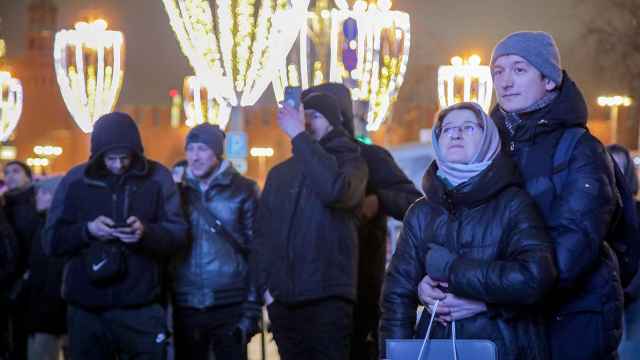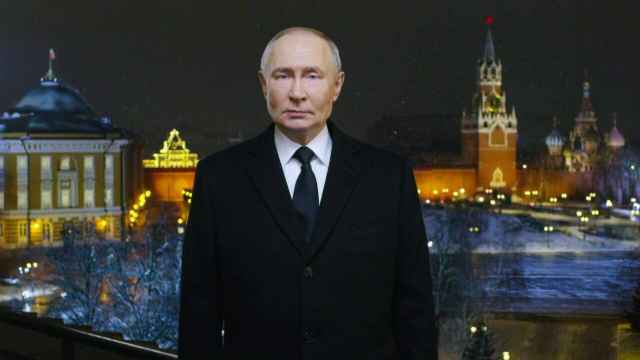LONDON — Kazakhstan's hefty currency devaluation could see other ex-Soviet states follow suit to protect their trade against fallout from a slide in the ruble as Moscow moves to float its currency.
The ruble has lost 6 percent against the dollar this year and many analysts see that as the key factor that prompted Kazakhstan, which buys nearly 40 percent of its imports from Russia, to seize the initiative and devalue its tenge on Tuesday by 19 percent against the dollar.
It may also push Belarus and Ukraine into devaluations of their own — potentially a beggar-thy-neighbor cycle that risks disrupting trade balances across the region.
"In all these countries, authorities are looking at the ruble in their rear-view mirror," said Christopher Granville, managing director at consultancy Trusted Sources in London.
"The ruble is the anchor currency for the wider trading area so you are seeing other countries responding to Russia allowing a sharp ruble move."
Kazakhstan attributed its move to global volatility caused by the U.S. Federal Reserve scaling back its policy of printing money through buying financial assets. But analysts saw the explanation rather in an effective depreciation of the ruble against the tenge by some 10 percent over the past year.
"The devaluation versus the dollar clearly targets the ruble-tenge cross," said ING Bank's Dmitry Polevoy, who added in a note to clients that calculations on a balance of payments basis put fair value for the tenge about 10 percent stronger than the 185 per dollar which is now the central bank target.
"So the National Bank of Kazakhstan wins a more beneficial position for the tenge," Polevoy said. "The only question is whether Russia will follow suit."
Russia Dominant
Tuesday's Kazakh move comes exactly five years after an 18-percent tenge devaluation.
Back then, plunging oil prices had undermined the ruble. This time, too, the process began in Moscow, which last month scrapped targeted ruble interventions, indicating a shift to a fully floating currency was on track for 2015.
Along with the broader flight from emerging markets, that sent the ruble to record lows against a dollar-euro basket.
For Moscow's Customs Union partners, Belarus and Kazakhstan, the shift is particularly bad news because their local producers can no longer use tariff barriers against cheap imports from their giant neighbor.
Russian exports to Kazakhstan for instance have risen sharply in the past year, trade data show, with 38 percent of Kazakhstan's imports now coming from its northern neighbor. About 7 percent of Kazakh exports go to Russia.
Kazakhstan's trade surplus shrank by more than 10 percent last year, while the current account surplus fell to a sixth of 2012 levels, a factor the central bank cited for its action.
Russia may not respond directly to the Kazakh devaluation; though it is unlikely to stand in the way of further weakening in the ruble, its exports to its neighbors are limited.
"For Russia, it is not a big deal," said Alfa Bank economist Natalia Orlova in Moscow, who estimated that Ukraine and Kazakhstan each account for just 3 to 4 percent of Russian trade.
"But for these other countries, the fact that the ruble is going down is really complicating things. They are feeling the global situation, but through Russia."
Eyes on Ukraine, Belarus
Ukraine and Belarus may have little choice but to follow Kazakhstan down the devaluation route.
"The National Bank will not react in the next week or two," said Dmitry Kruk, an economist at the Belarussian Economic Research and Outreach Center in Minsk.
"But if the devaluation of the Russian currency is more prolonged, then it will have to take account of this fact and let the Belarussian ruble fall."
The currency of Russia's western neighbor is linked to the Russian ruble by a crawling peg.
In Ukraine, where the prospect of joining the Russian-led Customs Union has contributed to mass protests against the government in the past three months, there has already been pressure on the hryvna and the fact that a third of Ukraine's imports come from Russia may add to pressure for a devaluation.
Last week, the central bank imposed currency controls to slow a decline of 10 percent against the dollar since November that was prompted in part by protests against the president's rejection of a trade deal with the European Union under Russian pressure.
But diminishing reserves, a huge trade deficit and a recession are clearly tempting Kiev to let the hryvna weaken.
The currency fell more than 2 percent after the Kazakh announcement while the Belarussian ruble also weakened.
Much will depend on what Russia does next.
Many reckon it will simply let the ruble slip gradually.
But the Kazakh move could inspire others to try and seize the initiative in the currency war: "Their idea seems to be that the trend of currency weakness will persist," Granville said of the Kazakhs. "And they would rather get ahead."
A Message from The Moscow Times:
Dear readers,
We are facing unprecedented challenges. Russia's Prosecutor General's Office has designated The Moscow Times as an "undesirable" organization, criminalizing our work and putting our staff at risk of prosecution. This follows our earlier unjust labeling as a "foreign agent."
These actions are direct attempts to silence independent journalism in Russia. The authorities claim our work "discredits the decisions of the Russian leadership." We see things differently: we strive to provide accurate, unbiased reporting on Russia.
We, the journalists of The Moscow Times, refuse to be silenced. But to continue our work, we need your help.
Your support, no matter how small, makes a world of difference. If you can, please support us monthly starting from just $2. It's quick to set up, and every contribution makes a significant impact.
By supporting The Moscow Times, you're defending open, independent journalism in the face of repression. Thank you for standing with us.
Remind me later.





